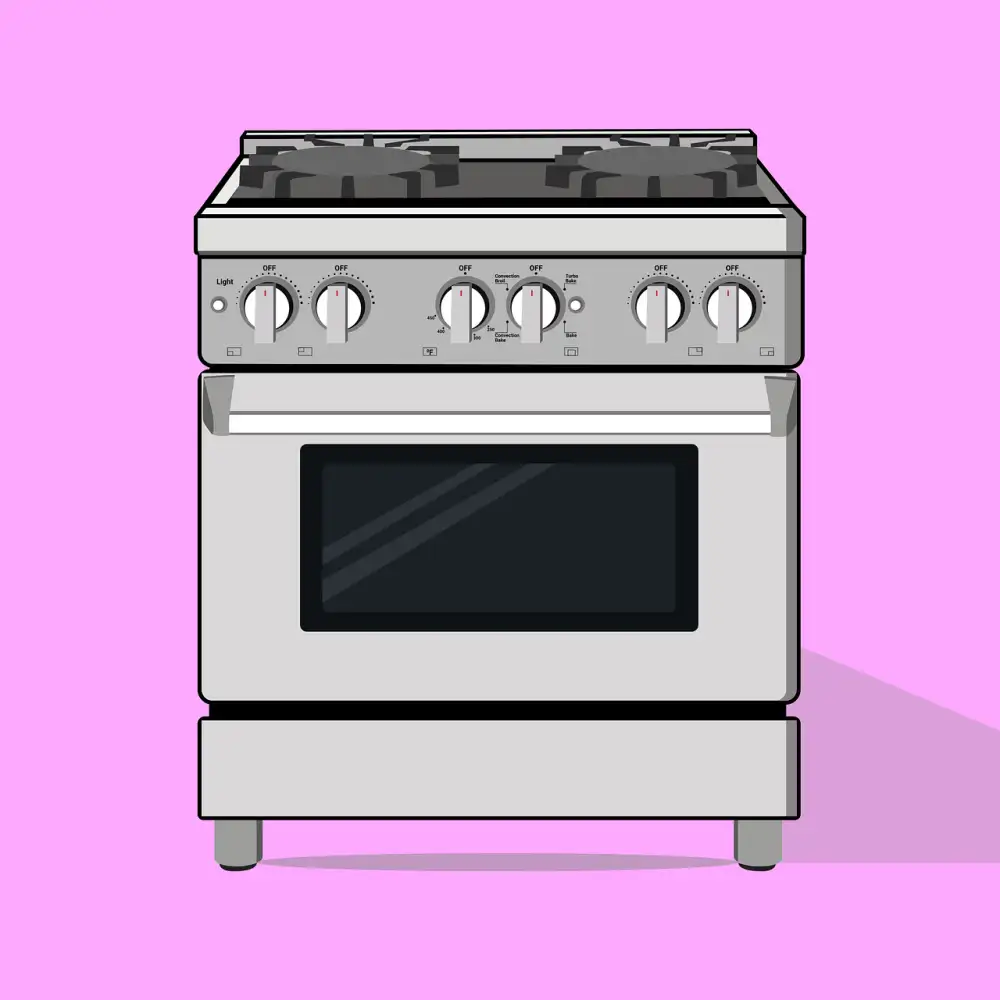Mastering the Art of Cooking: A Step-by-Step Guide on How to Use a Convection Oven at Home

Convection ovens have become increasingly popular in home kitchens due to their ability to cook food faster and more evenly. Unlike traditional ovens, which rely on radiant heat, convection ovens use a fan to circulate hot air throughout the cooking chamber. This constant circulation of hot air ensures that food is cooked uniformly, resulting in perfectly crispy and golden brown dishes. Whether you're a seasoned chef or just starting out in the kitchen, mastering the art of cooking with a convection oven can elevate your culinary skills to new heights. In this step-by-step guide, we will explore the basics of using a convection oven at home and provide valuable tips for achieving delicious results every time you cook. So let's dive in and unlock the secrets of this powerful kitchen appliance!
Understanding the Basics of a Convection Oven
A convection oven is a kitchen appliance that uses a fan and exhaust system to circulate hot air evenly around the food. This results in faster and more efficient cooking compared to traditional ovens. The circulating hot air helps to cook food more evenly, reducing the risk of overcooking or undercooking certain areas.
One key feature of a convection oven is its ability to maintain a consistent temperature throughout the cooking process. This means that you don't have to worry about rotating your dishes or adjusting cooking times as frequently.
Additionally, convection ovens often have multiple racks, allowing you to cook multiple dishes at once without worrying about flavors mixing or uneven cooking. The even heat distribution also helps with browning and crisping, giving your dishes a professional touch.
It's important to note that not all recipes are designed for convection ovens. Some recipes may need adjustments in cooking time and temperature when using a convection setting. Understanding these basics will help you make the most out of your convection oven and achieve delicious results every time you cook.
Preheating Your Convection Oven
Preheating your convection oven is an essential step to ensure even cooking and optimal results. Before you start cooking, set the desired temperature and allow the oven to preheat. Unlike traditional ovens, convection ovens heat up quickly due to their fan-assisted circulation system. This ensures that the hot air is evenly distributed throughout the oven, resulting in faster and more efficient cooking. Preheating also helps to eliminate any residual moisture or odors from previous use. It's important to note that preheating times may vary depending on the model of your convection oven, so always refer to the manufacturer's instructions for guidance. Once your oven has reached the desired temperature, you can begin cooking with confidence, knowing that your food will be cooked evenly and thoroughly.
Adjusting Cooking Times and Temperatures
One of the key benefits of a convection oven is its ability to cook food faster and more evenly than a traditional oven. However, this means that you may need to adjust your cooking times and temperatures when using a convection setting.
When using a convection oven, it is generally recommended to reduce the cooking temperature by about 25 degrees Fahrenheit. This is because the hot air circulation in the oven helps to distribute heat more efficiently, resulting in faster cooking times.
In addition to reducing the temperature, you should also decrease the cooking time. As a general rule of thumb, start by reducing the cooking time by about 25% and then check for doneness. If the food is not fully cooked, you can continue cooking for a few more minutes until it reaches the desired level of doneness.
It's important to note that these adjustments may vary depending on the recipe and the type of food you are cooking. It's always best to refer to specific recipes or consult your oven's user manual for more precise guidelines.
By adjusting your cooking times and temperatures accordingly, you can ensure that your food cooks evenly and comes out perfectly every time you use your convection oven.
Using the Convection Setting for Baking
One of the great advantages of a convection oven is its ability to evenly bake your favorite treats. When using the convection setting for baking, there are a few key points to keep in mind.
First, always preheat your oven before placing your baked goods inside. This ensures that the oven reaches the desired temperature and allows for consistent baking throughout.
Next, be mindful of adjusting cooking times and temperatures. Generally, when using the convection setting, you can lower the temperature by about 25 degrees Fahrenheit and reduce cooking time by about 25%. However, it's important to monitor your baked goods closely as they may cook faster than expected.
When placing multiple trays or pans in the oven, make sure to leave enough space between them for proper air circulation. This helps to avoid uneven baking and ensures that each item cooks evenly.
Lastly, consider using light-colored or non-stick pans when baking in a convection oven. These types of pans help to prevent excessive browning or burning on the bottom due to the intense heat generated by the convection setting.
By following these tips and experimenting with different recipes, you'll soon become a master at using the convection setting for baking in your own kitchen.
Using the Convection Setting for Roasting
Roasting is a popular cooking method that brings out the natural flavors and textures of meats, vegetables, and even fruits. With a convection oven, you can take your roasting game to the next level.
To roast in a convection oven, start by preheating it to the desired temperature. The convection setting circulates hot air evenly around the food, resulting in faster and more even cooking. This means you can roast your favorite dishes in less time than with a conventional oven.
When roasting with a convection oven, it's important to use a shallow roasting pan or baking sheet. This allows the hot air to circulate around the food properly and ensures even browning. Avoid using deep pans or covering the food as this can hinder the circulation of air.
To achieve that perfect golden-brown crust on your roasted meats or vegetables, consider using higher temperatures than you would with a conventional oven. The circulating hot air in a convection oven helps to sear the outside of your food quickly while keeping it moist on the inside.
Remember to adjust your cooking times accordingly when using a convection oven for roasting. Since convection cooking is more efficient, you may need to reduce the cooking time by about 25% compared to traditional methods. Keep an eye on your food and use a meat thermometer to ensure it reaches the desired internal temperature.
For best results, avoid overcrowding your roasting pan. Leaving enough space between each piece of food allows for proper airflow and ensures even cooking. If necessary, cook in batches or use multiple pans.
Using the convection setting for roasting not only saves time but also produces deliciously crispy and succulent results. Experiment with different recipes and ingredients to discover new flavors and textures that will impress your family and friends.
Mastering the art of roasting with a convection oven takes practice, so don't be afraid to experiment and make adjustments along the way. With time, you'll become a pro at using this versatile cooking method to create mouthwatering roasted dishes that will leave everyone wanting more.
Tips for Properly Using a Convection Oven
1. Use the right cookware: Opt for shallow, lightweight pans to allow for proper air circulation. Avoid using dark-colored or nonstick pans, as they may absorb too much heat and affect cooking times.
2. Adjust cooking times: Since convection ovens cook food faster, reduce the recommended cooking time by about 25%. Keep an eye on your dish to prevent overcooking.
3. Lower the temperature: Lower the temperature by about 25 degrees Fahrenheit when using a convection oven. This will ensure even cooking and prevent burning.
4. Rotate dishes: To ensure even browning and cooking, rotate your dishes halfway through the cooking process. This will help distribute heat evenly.
5. Avoid overcrowding: Leave enough space between dishes to allow hot air to circulate freely. Overcrowding can lead to uneven cooking results.
6. Monitor food closely: Keep an eye on your dish as it cooks in a convection oven, as it may cook faster than expected. Use a timer and check for doneness regularly to prevent overcooking.
7. Use lower racks for roasting: When roasting meats or vegetables, place them on lower racks to allow hot air to circulate around them more effectively.
8. Keep the door closed: Unlike traditional ovens, avoid frequently opening the door of a convection oven while cooking. Opening the door can cause heat loss and affect cooking times.
By following these tips, you can make the most out of your convection oven and achieve delicious results every time you cook!
Cleaning and Maintenance of Your Convection Oven
Cleaning and maintaining your convection oven is essential to ensure its longevity and optimal performance. Here are some tips to keep your oven in top shape:
1. Regularly clean the interior of the oven with a mild detergent and warm water. Avoid using abrasive cleaners that can damage the oven's surfaces.
2. Remove any food debris or spills immediately to prevent them from burning and causing unpleasant odors.
3. Clean the oven racks separately by soaking them in warm, soapy water. Scrub off any stubborn stains or residue before rinsing and drying them thoroughly.
4. Wipe down the exterior of the oven with a damp cloth to remove any grease or dirt. Be sure to dry it completely to avoid water damage.
5. Check and clean the oven's ventilation system regularly to prevent any blockages that could affect its performance.
6. If your convection oven has a self-cleaning function, follow the manufacturer's instructions for safe use. This feature uses high heat to burn off food residue, leaving behind ash that can be easily wiped away.
7. Inspect the door gasket for any signs of wear or damage, as this can affect the oven's efficiency. Replace it if necessary.
By following these cleaning and maintenance practices, you can ensure that your convection oven remains in excellent condition, allowing you to continue creating delicious meals for years to come.
With the knowledge and understanding of how to use a convection oven, you can elevate your cooking skills to new heights. The even heat distribution and faster cooking times make it an invaluable tool in any kitchen.
By preheating your convection oven and adjusting cooking times and temperatures accordingly, you can ensure perfectly cooked meals every time. Whether you're baking delicate pastries or roasting succulent meats, the convection setting will enhance the flavors and textures of your dishes.
Remember to follow the tips for properly using a convection oven, such as using shallow pans and avoiding overcrowding. This will guarantee optimal results and prevent any mishaps during the cooking process.
Lastly, don't forget to clean and maintain your convection oven regularly. This will not only prolong its lifespan but also ensure that it continues to perform at its best.
So go ahead, unleash your culinary creativity, and savor the flavors that a convection oven brings to your table. With practice, patience, and a little experimentation, you'll soon become a master in the art of cooking with this versatile appliance. Happy cooking!
Published: 16. 12. 2023
Category: Home



